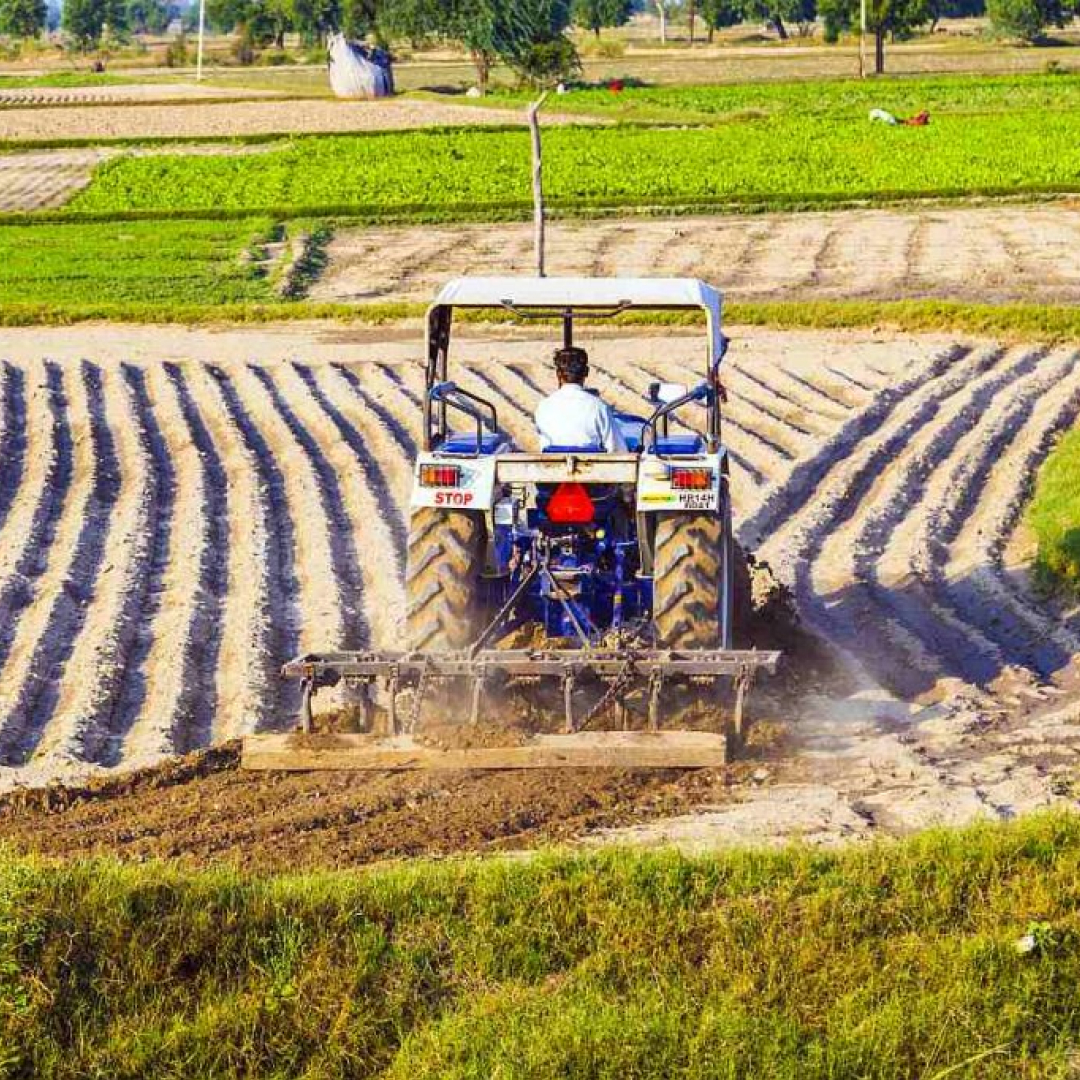
Indian agriculture has made significant strides, achieving record-high food grain (332.3 million tons) and horticulture (351.1 million tons) production in 2023–2024. Currently the world’s seventh-largest net exporter of agricultural products, India produces cereals (wheat, rice, maize, millets), pulses, fruits, vegetables, spices and medicinal plants. Decades of improved production have increased cereal, fruit and vegetable availability. However, sector growth has fluctuated due to climate change and resource depletion.
Another major concern today is sustainability. Sustainably managed agriculture can protect water resources, enhance soil health and restore vital habitats. While unsustainable practices harm both the environment and people. Sustainable agriculture—encompassing organic, biological and biodynamic methods—mimics natural ecological processes, making responsible resource management essential.
Chemical-based farming depletes soil carbon, while BioAg restores it affordably. Soil carbon sequestration through BioAg costs less than one percent of conventional emission reduction methods. Converting 2.5 percent of global farmland to bio-agriculture would cost USD 7 billion annually. Studies show sequestration rates of 0.2–3 tons of carbon per hectare per year, with soil carbon increasing by 16 percent in biodynamic and 12 percent in organic systems. The average pesticide consumption in India is 570 grams per hectare, which is relatively low compared to countries like Japan and Thailand, where consumption rates reach 11 kg and 17 kg per hectare, respectively. Sustainable farming reduces global warming and energy use while maintaining productivity.
India’s BioAg market is expanding due to rising awareness of biopesticides, biofuels and biofertilizers. Demand is growing for high-yield, nutrient-rich crops requiring fewer resources, driven by population growth and interest in organic food. Government support for sustainable farming, amid soil degradation and groundwater decline, further boosts the sector. Health-conscious consumers and farmers seeking safer alternatives to toxic chemicals are also driving market growth, creating profitable opportunities for industry investors.
The Indian BioAg market, valued at USD 778.11 million in 2022, is on a strong growth trajectory, projected to reach USD 1,214.34 million by 2028 at a 7.3 percent CAGR (IMARC Group). Globally, the agricultural biologicals market was worth USD 7.2 billion in 2019 and is set to expand at a rate of 9.4 percent CAGR, reaching USD 14.7 billion by 2027. With rising demand for organic food, market volume is expected to grow from 5,694.56 kilotons (2020) to 10,185.68 kilotons (2027), reinforcing the industry’s rapid expansion.
Research and Development
Biofertilizers Research in biofertilizers in India focuses on enhancing plant growth and soil health through microorganisms such as cyanobacteria, fungi and bacteria. Key advancements include the development of microbial consortia and new biofertilizers like K-solubilizers and Zn-solubilizers. The All India Network Project on Soil Biodiversity-Biofertilizers and the National Mission on Sustainable Agriculture support these innovations. Despite progress, usage remains low outside southern India, with ongoing efforts to improve awareness and accessibility. Research-driven developments continue to play a crucial role in promoting biofertilizers across the country.
Biopesticides ICAR has been instrumental in advancing biopesticide research and developing eco-friendly solutions like Bacillus thuringiensis and Trichoderma to combat crop pests. Since the launch of the All India Coordinated Research Project (AICRP) on Biological Control in 1977, the Indian research community has focused on creating effective, safe alternatives to chemical pesticides. While biopesticides make up a small portion of India’s pesticide market, research is expanding, and the development of a wider range of bioagents will be key to increasing adoption and efficacy. The recent invasions of fall armyworm (FAW) infesting maize and devastating infection of banana by Fusarium cubense TR4 race have been successfully managed with microbial agents (Fusicont) developed by ICAR.
Biocontrol Agents Biocontrol agents are at the forefront of India’s sustainable pest management efforts. ICAR’s research focuses on identifying efficient bioagents and developing scalable biocontrol technologies. Through the AICRP on Biological Control, valuable work is done to catalog beneficial species and develop practical, effective biocontrol methods. Research-driven innovations help reduce chemical pesticide use, promoting environmentally friendly practices supporting farmer health and crop protection.
Biostimulants Biostimulant research in India is focused on enhancing crop health and productivity through products like seaweed extracts, humic acids and microbial biostimulants. These innovations are crucial in improving nutrient efficiency and environmental stress tolerance. Research advancements are aimed at improving biostimulant effectiveness for diverse agricultural conditions, helping farmers adapt to challenges like drought and salinity. As a result, biostimulants are becoming increasingly significant in sustainable agriculture practices.
The Indian government ensures farmers have access to quality fertilizers and pesticides at reasonable prices through the Fertilizer Control Order and the Central Insecticide Board. These measures regulate production, quality, distribution and pricing to protect legitimate dealers and manufacturers from exploitation by unscrupulous entities.
Indian Biofertilizers Market: Growth, Trends and Opportunities
The biofertilizers market in India has been witnessing substantial growth, driven by the increasing shift towards sustainable agricultural practices and the rising awareness of the adverse effects of chemical fertilizers. According to a report by Fortune Business Insights, the market was valued at USD 99.59 million in 2021 and is projected to reach USD 243.61 million by 2029, growing at a compound annual growth rate (CAGR) of 12.02 percent during the forecast period.
Biofertilizers, containing beneficial microorganisms, play a crucial role in enhancing soil fertility and promoting plant growth by facilitating nutrient availability. The increasing adoption of organic farming practices in India has significantly contributed to the demand for biofertilizers. Government initiatives aimed at reducing the reliance on chemical inputs and promoting sustainable agriculture have further bolstered market growth.
The COVID-19 pandemic posed challenges to the biofertilizers industry, such as labor shortages and disruptions in the supply chain. However, the government’s recognition of agriculture as an essential sector facilitated the circulation and transportation of agricultural products, aiding in the market’s recovery.
Collaborations and partnerships have been instrumental in advancing the biofertilizers market. For instance, in June 2020, the Indian Council of Agricultural Research (ICAR) and the Indian Farmers Fertilizer Cooperative Ltd (IFFCO) signed a contract for joint research, testing and validation of various products. This collaboration aims to disseminate technological advancements through training, awareness programs, field tests and demonstrations, ultimately enabling farmers to reduce chemical fertilizer consumption.
In conclusion, the India biofertilizers market is poised for significant growth, driven by the increasing adoption of sustainable agricultural practices, supportive government policies, and collaborative efforts within the industry.
Indian Biopesticides Market: Growth and Opportunities
The Indian biopesticides market is witnessing significant growth, driven by the increasing demand for sustainable agricultural practices and eco-friendly pest control solutions. According to a report by Fortune Business Insights, the market was valued at approximately USD 64.73 million in 2021 and is projected to reach USD 130.37 million by 2029. This growth is fueled by concerns over chemical pesticide residues, which have led farmers to adopt biopesticides as a safer alternative.
The market is segmented by type, including biofungicides, bioinsecticides and bionematicides, with biofungicides holding a dominant share due to their effectiveness in controlling plant diseases. The sector also benefits from innovations in microbial and biochemical pesticide formulations, making them more efficient and accessible to farmers.
Government initiatives, including subsidies and research investments, are playing a crucial role in fostering biopesticide adoption. These policies support farmers in transitioning to organic and sustainable farming methods. The market is further categorized based on crop types, with fruits, vegetables, cereals and oilseeds being the primary areas of application.
Indian Biostimulants Market: Growth, Trends and Opportunities
The India biostimulants market is experiencing rapid growth, fueled by the increasing shift towards sustainable agricultural practices and organic farming. According to a report by Fortune Business Insights, the market was valued at USD 355.53 million in 2024 and is projected to reach USD 1,135.96 million by 2032, growing at a CAGR of 15.64 percent.
This surge is driven by farmers’ need to improve crop productivity while reducing dependence on chemical fertilizers. Biostimulants, derived from natural substances, help enhance plant growth, increase stress resistance and improve soil health. With the depletion of soil quality due to excessive chemical use, many Indian farmers are turning to these biological solutions to improve yields. Additionally, government initiatives promoting sustainable farming and organic food production have further propelled market demand.
The COVID-19 pandemic initially posed challenges for the sector, disrupting supply chains and reducing production. However, as restrictions eased and biostimulants were categorized as essential products, the industry rebounded quickly.
Looking ahead, increased investments and research into biostimulant technology are expected to further drive market expansion. Companies in Biotech have been securing funding to enhance production and innovation in the sector. With India being a global leader in organic farming, the demand for biostimulants is set to rise, offering significant opportunities for businesses and farmers alike.
Regulatory Overview
The Indian government regulates biofertilizer production, distribution and pricing under the Fertilizer Control Orders (FCO), guided by the authority of the Essential Commodities Act (ECA). The Central Fertilizer Committee (CFC) recommends new fertilizers, including biofertilizers, and their specifications. FCO’s Schedule III outlines specifications for 11 biofertilizers, including consortia, while Schedule IV covers organic fertilizers. Strict penalties are imposed on the sale of substandard fertilizers.
The government introduced a new regulatory framework for biostimulants under the Fertilizer Control Orders, establishing the Central Biostimulant Committee (CBC). This committee advises on biostimulant inclusion, specifications and laboratory requirements. Regulations ensure biostimulants are free from harmful substances, with a strict limit on heavy metals and pesticide content.
The Insecticides Act of 1968, later amended in 2000, governs the regulation of pesticides, including biopesticides, in India. The government, through the Registration Committee, evaluates the safety and efficacy of pesticides before registration, considering factors like toxicity, environmental impact and effectiveness. Approximately 946 pesticide formulations, including biopesticides, have been registered.
With a growing demand for safer and greener crop protection solutions, India’s regulatory bodies are actively facilitating product approvals and market expansion. Both public and private sectors are focusing on emerging opportunities within the country and investing in research and development, enhancing competition as bio-ingredient investments increase.
Thanks to advancements in farming practices, ongoing technical innovations, and government policies supporting sustainable agriculture, the future of India’s BioAg industry is poised for significant growth, driving the nation toward more resilient and sustainable farming.
REFERENCES‘
1. Fortune Business Insights. (n.d). India Biostimulants mar-ket Size, Share, Growth Report, 2032.
2. Fortune Business Insights. (n.d). India Biofertilizers MarketSize, Growth and Report [2022-2029].
3. Fortune Business Insights. (n.d). India Biopesticides MarketSize, Share and Growth [2029].
4. Mordor Intelligence. (n.d.). India agricultural biologicalsmarket.







Leave a Reply